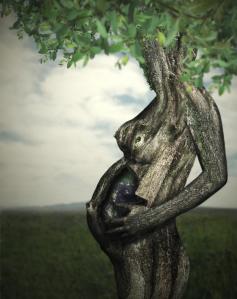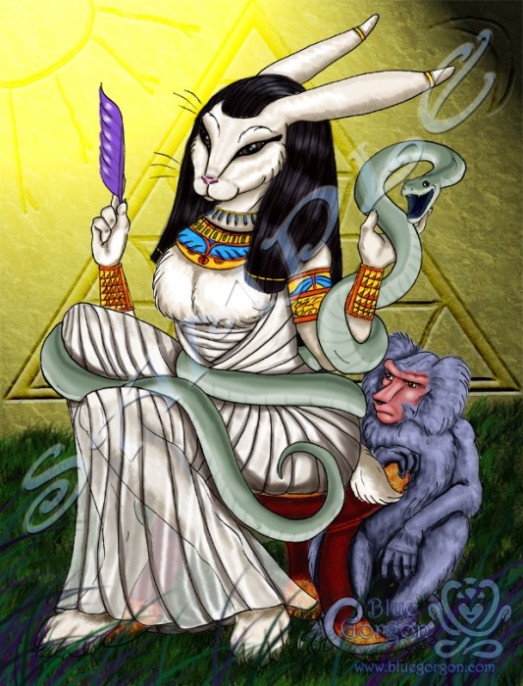
written and copyrighted by Týra Alrune Sahsnotasvriunt
Surprisingly the misinformation that Anglo-Saxon Benedictine nun Walburga (710-779), who proselytized in Germany (ironically in Heidheim, “Heathen Home”) is the originator of Walpurgis’ Night and that it is a Catholic holiday is a wide-spread one.
This is even something promoted by German bloggers on wordpress, one of them even mentioning that “some” believe there “might be” Pagan roots to this holiday, but “this has never been definitively proven”.
A rather strange claim to those who have researched sources other than wikipedia or the countless Pagan and witches’ forums, groups and pages on here.

No. No. No. The Christian nun Walpurgis/Walburga had *nothing* to do with Walpurgisnacht, the ancient Pagan holiday…!
A translation of the name Walpurgis might already shed some light on the meaning of this holiday. Wal is a word with many translations and meanings, amongst other things, it means “large” and “staff”/”wand” but also “chosen” and “corpse”.
For example: The Walküren (Old Norse: valkyrjar) are the ones choosing the corpses off the battlefield. These Einherjer will fare to Walhalla, the hall of the slain, the chosen warriors, and reap the rewards of their bravery.
As already mentioned on this blog in https://paganmeltingpot.wordpress.com/2014/09/05/its-a-girl-thing-germanic-heroines-warriors-seers-witches-and-goddesses-part-1/, Waluburg (Walborg, Walburg) was also a famous seer of the Semnone tribe.
Naturally, her wand was her instrument of power and she was believed to – metaphorically – carry inside her the (knowledge of the) fate (=life and death) of her tribe if not mankind in general. This is the origin of the (term) “mental pregnancy” that various occult traditions adopted about a thousand years later.
Walpurgisnacht was also called Hexennacht (witches’ night). Magic conducted on this night would “ripen” especially fast and “be born” in the course of May, the ultimate “birth-month”.
Purgis for once is related to the German word Burg, homestead, castle and to the word Berg, mountain, and it also means motherly womb.
The rune Berkana in which the German words “Burg” or “Berg” are being preserved, is the “May”-rune, the birch-tree rune, also known as the rune of birth, rebirth, (fertility), motherly nourishment.
What does Berkana look like? Like a big-breasted and pregnant woman from the side. Mother nature at the height of her life.
Around the time of Walpurgisnacht nature really is “pregnant”; about to give birth to the fruits and flowers of the forests and fields, animals are having their litters, nature is basically exploding with new life.
The cycle of life, especially birth was not only viewed as something sacred but also female mystery and magic.
Metaphorically speaking we are all being suckled at the breasts of mother nature around this time of year: She is the great sustainer, the nourisher who is encouraging us to be fertile, to be productive, to create.
This is why the spirit of especially fertile creatures was “invoked” during this time also – the rabbit and the hen especially.
We already know that Christians also stole Easter, amongst many other things, but indeed the idea of easter eggs and putting up small figurines of rabbits, chicks and spring flowers is a Pagan one. It is unclear whether Eostre (“Ostara” – Easter) was an actual Germanic Goddess or a figure like Frau Holle that was later apotheosized or whether she might have any correlation to Norse Skadi, the “hare-headed” Goddess. This might be a blog post for another day.
Anyhow, May is also the time of year we still celebrate Mother’s Day in Germany and as far as I know also in several other Northern European countries.
Needless to say, the Christian Church hated the idea of women holding such a special, sacred and “powerful” role as creators of life and weavers of magic. The whole Christian religion appears to have been built on males’ inferiority complexes mainly anyhow.
The idea of pregnancy not conceived by the “holy spirit” but ordinary means, was a constant reminder of “original sin” and to celebrate it a sacrilege and an outrage. In the spirit of Exodus 22:18’s “Thou shalt not suffer a witch to live”, magic was condemned and banned just the same.
Like with so many other Pagan festivals and holy days, the Christian monks had trouble weeding out the beliefs and celebrations associated with Walpurgisnacht and thus claimed it for themselves.
Conveniently the above mentioned nun Walpurga was made the Christian matron of this celebration, May 1st was dedicated to her.
And suddenly the holiday was not so much about birth but about warding off evil witches and ungodly powers.
As if that was not enough, it was also the day in the middle ages, on which evil witches were hanged, drowned, burned and otherwise tortured to death during public spectacles. This event was then lavishly celebrated with dance and song.
This is why it is exceptionally hard to bear that even today’s Pagans and Heathens subscribe to this Christian nonsense. Many Pagans of different traditions gather at the Blocksberg (Brocken area, Saxony-Anhalt/Germany), a mountain (“Berg” > Berkana!) of age-old spiritual significance, and celebrate in a manner that does not befit this blessed day of Mother Nature giving birth.

View over the Brocken area (near Wernigerode in Saxony-Anhalt) from the Blocksberg. This stone altar was renamed “devil’s pulpit” by Christians, a term modern Pagans kept unfortunately…
Instead they are warding off those”evil” powers known as birth, rebirth, motherhood and the magic of creation – without even knowing it (or at least I strongly presume they don’t!)
Nowadays’ Pagans and witches will often sweep the area around the Brocken mountain on April 30th with fern, also known as “devil’s brush” since the early middle ages. This is to keep away the devil, demons, evil spirits and so forth. An obviously VERY Pagan thing to do…
There are several other disturbing traditions that modern Pagans and witches follow without questioning them even once. Why? Because they read them online or in “some medieval book”.
Those who have read the accounts of Tacitus or Cesar on the Germanic tribes know that just because a book is ancient, it is not necessarily completely true. These two above mentioned Romans were experts in confusing facts and even names.
So how can we reconstruct Walpurgisnacht? Even Felix Bartholdy Mendelssohn Theodor Storm or Johann Wolfgang von Goethe had it more right than most of today’s polytheists. One of our German “Bauernregeln” (country sayings/folk lores) states that “Ist die Hexennacht voller Regen, wird’s ein Jahr wohl voller Segen”. (If it rains during the witches’ night it will be a year full of blessing.) Another indication of this holy day being a celebration of fertility and (re-)birth. Despite brutal Karl the Great’s conversion of the Saxons to Christianity the “Tanz in den Mai” (dancing into May) remained a beloved and popular religious holiday here, up until today.
Dancing around a Maypole – think about this.
The Maypole symbolizes the phallus. (In our case Ingivi-Fro/Saxnot-Balder’s phallus). The men and women dancing around this pole were blessing his fertility, they were celebrating life itself and ultimately the union or the end-result of the union between “the God and Goddess”.
Our Irish brothers celebreated “Beltane”, not only etymologically related to the Semitic/(Hittite)God Baal or in the North “Balder”.
If you want to celebrate a more authentic Walpurgisnacht, do “freestyle” as much as you like, but always remember the actual reason and intention of this sacred day. Dance around a Maypole, is invoking the powers of the Mother, “Frija” and Saxnot or her/his equivalent, depending on your tradition. Otherwise, meditate, invoke your fertility and “love” deities, divine, drink, eat, be merry, make love in honor of the Gods who made us, who love us and sustain us, still – despite everything we are doing to their worlds – but don’t banish them with silly fear-filled rituals originating in a monotheist religion foreign to us (and basically foreign to life itself).
A popular recipe from early medieval times is the “Walpurgisbowle” or “Waldmeisterbowle” (woodruff punch). It was said to grant everyone who consumes it “the freedom to fly, imagine the future, see (reflect) on the past. (Of course the amount of sugar ensures that you will get drunk rather soon, the punch itself has a similar effect as Absinth has, meaning it will get you “high”) and Basically this punch consists of half a quart (500ml) white wine, half a quart (500ml) champagine, 1 ounce (approx. 30g) of sugar and a handful of woodruff leaves.
Enjoy your “inner journey”.




























